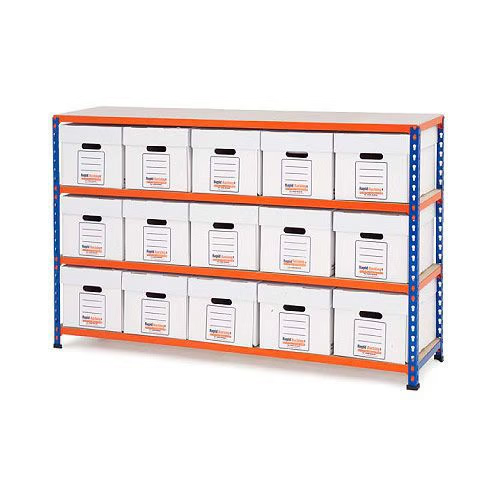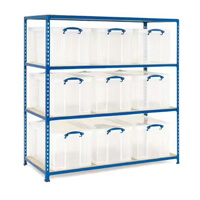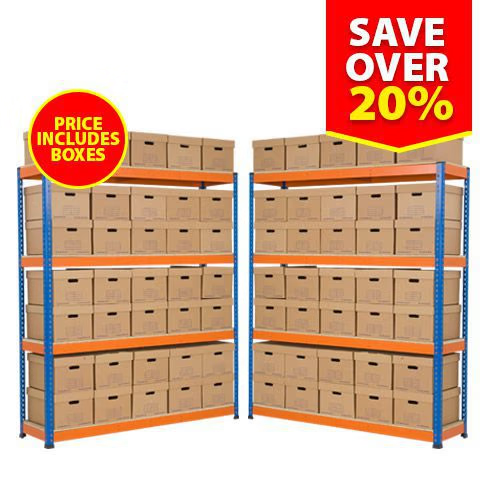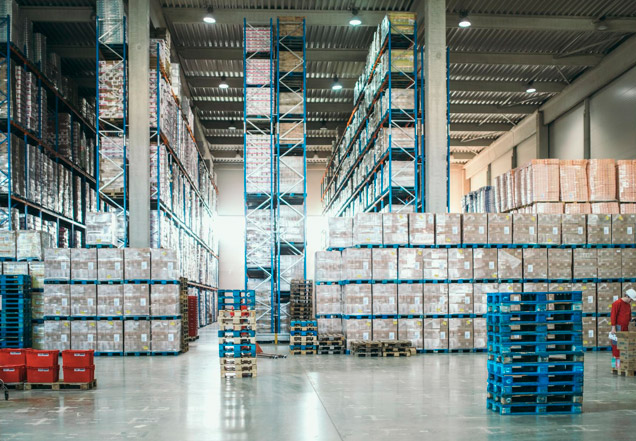Whether it’s for use at home or in the workplace, plastic containers are useful for tidying away anything important. Plastic containers come in a variety of shapes and sizes, but it can be a concern to people if they’re unaware of how to store them effectively without seriously damaging the contents or the storage boxes themselves.
After purchasing your chosen plastic containers, it’s important to store them in a suitable way. These types of boxes are made from robust materials, but there’s no way of guaranteeing that even the strongest plastic container will sustain its condition if it’s in a harmful environment.
Failure to store these containers properly can mean they get damaged or, even more worryingly, it can cause irreparable damage to the potentially fragile contents inside. By safeguarding against every potential hazard, you can ensure your plastic containers stand the test of time.
How to pack plastic containers
If you’re looking to store your plastic containers for work purposes, you’re likely to stack them within a store room, an unused office space or a warehouse. The key issue with using storage boxes for business is that they tend to be stacked up and paired alongside other storage boxes, often leading to damage you’re unaware of until you retrieve them months later.
Plastic containers are distinctly stronger, easier to stack and more durable than cardboard boxes, but they could be damaged just as easily if they’re stored in an irresponsible manner. As for home use, there could be less need for space if you’re only choosing to purchase a couple of storage boxes, but it’s just as important to make sure you’re putting them in a safe area and that you’re stacking them in a sensible way.
Simple tips for storing plastic containers include making sure that each box safely slots into the lid of the box below and not overloading any of your storage boxes to weigh more than they can physically hold. It’s also important to stack each box so they’re lighter the higher up they go, and make sure that everything within your storage boxes is sealed.
Depending on the type of storage container you’re looking to use, you could even simplify the process of stacking them by using shelving kits. With a full range of different shelving options available, you can make it easier to store plastic containers regardless of the size, ranging from shelving for small parts tubs and drawers, to more substantial storage shelves for larger boxes.
How to keep bugs out of storage boxes
It takes a long time for bugs to cause any genuine damage to the contents of your storage containers, but it would be foolish to underestimate how harmful they can be. Depending on what you’ve got in your storage boxes, bugs can ruin almost anything you’re putting away, so it’s crucial that you seal them out completely to rule out any chance of them becoming a problem.
Many boxes and containers come with a secure lid to ensure an airtight seal. As long as you’ve made sure that the lid has clicked into place and that there aren’t any holes in the container itself, your box and its contents should be safe from any unwanted visitors. It all comes down to the type of storage box that you’ve chosen to purchase, but more often than not, you’ll find that plastic containers come with a lid, making it easy to shut out bugs both big and small.
Can mice eat through plastic containers?
Mice, rats and other pesky rodents can be almost impossible to deter. Infestations of such rodents can be extremely troublesome for companies that choose to store all of their inventory in one place, as they’ve been proven to be capable of chewing through paper, cardboard, wood, wiring, glass and even certain metals.
Experts state that the two main intentions of mice are to keep their teeth in check and hunt for food. We wouldn’t expect you to attempt to alter the dental habits of inhabiting rodents, but you won’t face as much of a threat from mice and rats if you’re not storing food for long periods of time, which is usually the case if storage boxes are being used at work.
Many plastic boxes are made from polypropylene. It’s become a common occurrence for polypropylene to be an asset for manufacturers of plastic products, making it one of the most frequently used plastics worldwide, and a material which is often utilised for industrial packaging. The only downside to this material is that its popularity isn’t enough to prevent damage caused by surprisingly destructive vermin.
Due to the relentless nature of rodents, the best course of action would be to make sure that the environment you’re storing your plastic boxes in is suitably clean prior to introducing your containers, professionally fumigating the entire area beforehand if necessary.





Leave a Reply
You must be logged in to post a comment.